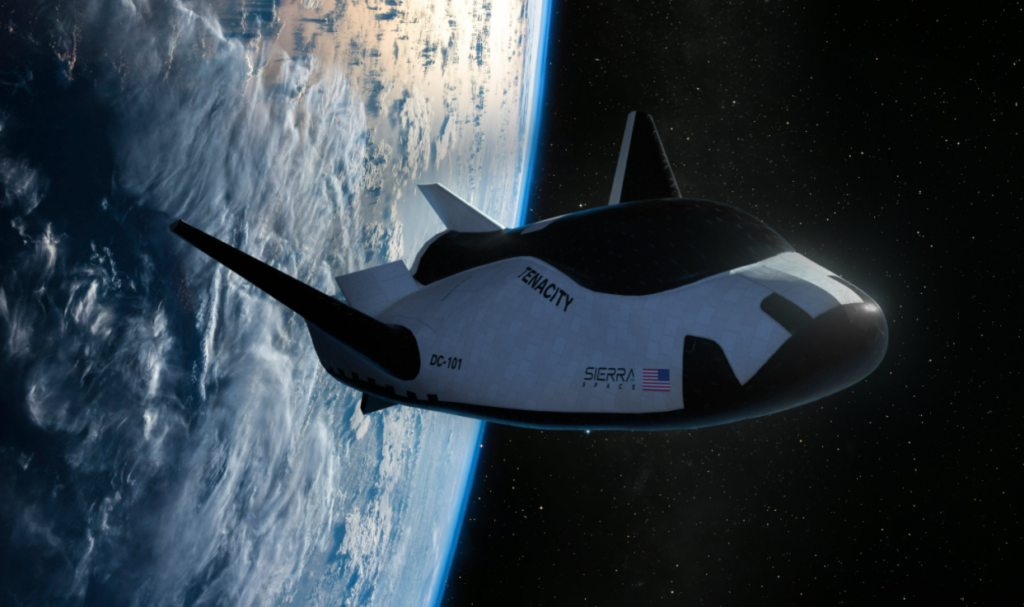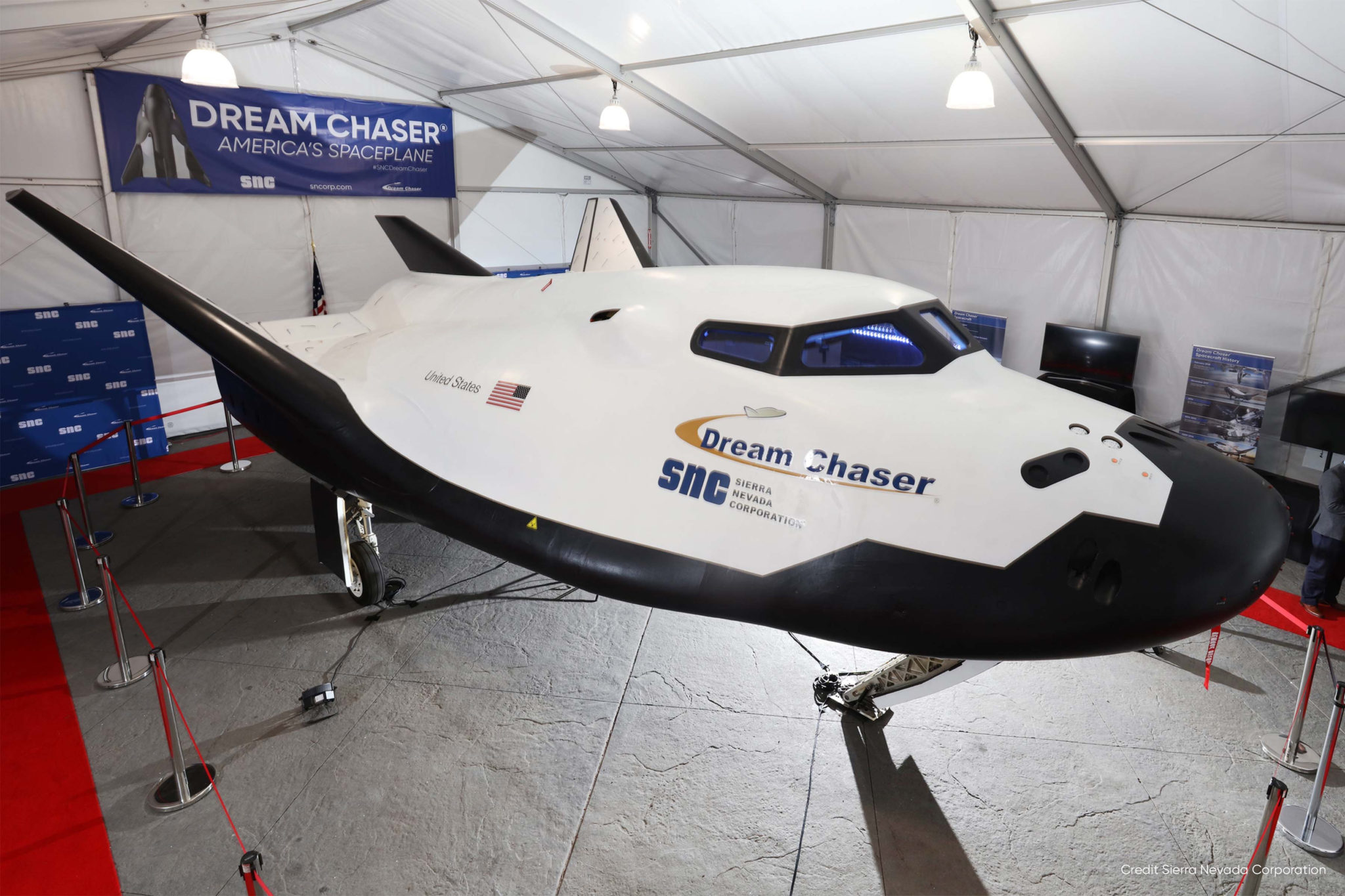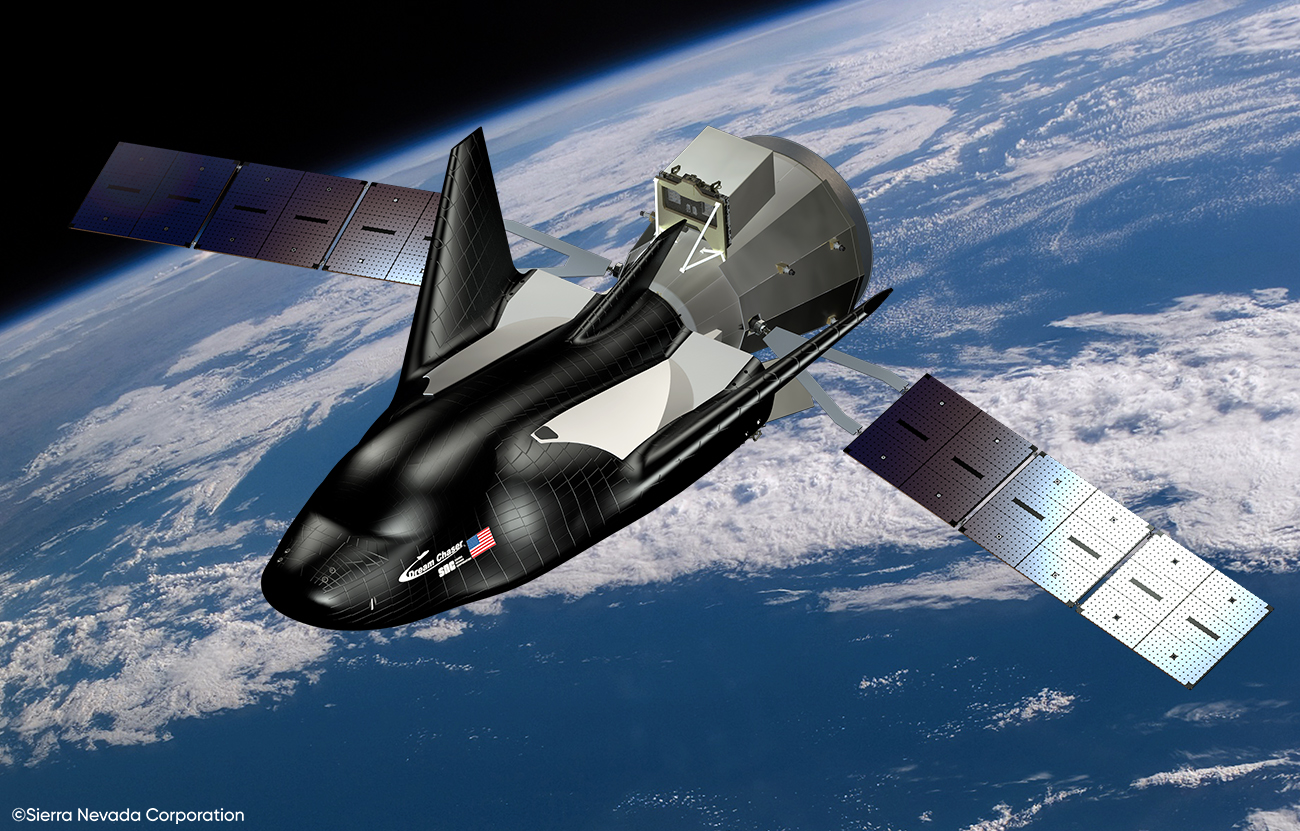
Sierra Space Is Making Significant Progress On Dream Chaser
Throughout the space industry, we are seeing a lot of different companies all working on new and innovative projects. Sierra Space for example has more than one ambitious idea for the future. This includes Dream Chaser, Orbital Reef, rocket engines, habitats for space, and much more. However, out of all those future plans, the company is making some of the most significant progress on a spaceplane.
This spaceplane is named Dream Chaser. Dream Chaser is a multi-mission space utility vehicle designed to transport crew and cargo to low-Earth orbit destinations such as the International Space Station. Based on recent information provided by Sierra Space and other sources, it looks as if the launch vehicle is making impressive progress. This would provide very unique opportunities throughout the market with a reusable design and general launch provider.
Dream Chaser was selected by NASA to provide cargo delivery, return, and disposal service for the space station under the Commercial Resupply Service 2 contract. However, Sierra Space has a lot of plans beyond just working with NASA. Here I will go more in-depth into the recent progress, overall goal, and what to expect in the near future regarding Dream Chaser.
Recent Progress

Over the past few years now progress has been made on Dream Chaser. This has all been working towards an official launch planned for later this year to the International Space Station. However, especially recently as the expected launch date gets closer, Sierra Space has been making significant progress on the spaceplane. Only a few days ago in March, Sierra Space tweeted saying, “Today SiemensSoftware announced that Sierra Space, has implemented Siemens’ Xcelerator portfolio of software and services as the foundation of its next-generation digital engineering program.” Specifically, The company is implementing Xcelerator to establish a fully digital environment from engineering to manufacturing through sustainment, which will help realize goals to develop the future of space transportation, commercial space destination, and infrastructure, and create enabling technologies that will build a vibrant, growing and accessible commercial space economy.
Siemens’ tools have been foundational throughout the development of Dream Chaser, and Sierra Space is building on this long-standing collaboration with Siemens as the company fully embraces a digital enterprise. Sierra Space will use Siemens’ Xcelerator in all phases of next-generation Dream Chaser development, including structural, thermal, mechanical, electrical, and software design, vehicle manufacture, requirements verification, and complete lifecycle maintenance. In addition, the spaceplane is uniquely capable of a smooth 1.5 low-g re-entry for crew and cargo transportation with the ability to land on compatible existing commercial runways worldwide. Representing the next generation of space transportation, NASA contracted Dream Chaser to perform cargo supply and return missions to the International Space Station (ISS), where it can deliver up to 12,000 pounds of cargo in a single trip. Sierra Space is expanding on this long-standing collaboration with Siemens as the company fully embraces the transformation to become a digital enterprise. This recent update provides valuable information regarding Dream Chaser’s progress and future.
Dream Chaser Overview

Now that we know more about some of the recent progress regarding Dream Chaser, we can take a closer look at the launch vehicle itself. What Sierra Space sometimes refers to as America’s Spaceplane, Sierra Space’s Dream Chaser spaceplane is a multi-mission space utility vehicle designed to transport crew and cargo to low-Earth orbit destinations such as the International Space Station. Dream Chaser was originally selected by NASA to provide cargo delivery, return, and disposal service for the space station under the Commercial Resupply Service 2 (CRS-2) contract. The Dream Chaser Tenacity spaceplane will be the first orbital vehicle in Sierra Space’s Dream Chaser fleet. Dream Chaser is intended to provide a minimum of seven cargo missions to and from the space station carrying critical supplies like food, water, and science experiments, returning to Earth with a gentle runway landing. Taking a look more in-depth, The Dream Chaser spaceplane is owned and operated by Sierra Space, a wholly-owned subsidiary of Sierra Nevada Corporation. Although the design, manufacturing, and assembly is based in Louisville, Colorado, they have assembled a world-class team of aerospace companies, NASA centers, universities, and international partners all collaborating to ensure the Dream Chaser is the safest, most reliable spacecraft in the world. Sierra Space has established cooperative agreements with international space agencies collectively representing almost two dozen spacefaring countries with a heritage of success that includes hundreds of missions. For NASA missions, vehicle refurbishment between flights will be performed at Kennedy Space Center in Florida.
Just like a lot of other launch vehicles within the space industry, Dream Chaser is intended to have multiple variants. This helps the launch vehicle excel at certain tasks and make use of its power, payload capacity, and more. This includes an uncrewed variant and a crewed variant. I first want to highlight the Cargo System or uncrewed Dream Chaser spaceplane. As I mentioned prior, under NASA’s Commercial Resupply Services 2 contract, Dream Chaser will provide a minimum of seven cargo service missions to and from the space station. With the help of Sierra Space’s Shooting Star service module, Dream Chaser can deliver up to 5,500 kg of pressurized and unpressurized cargo to the space station, including food, water, supplies, and science experiments, and returns to Earth with a gentle runway landing. The Shooting Star transport vehicle is a flexible 15-foot transport vehicle that will be used as an attachment to Dream Chaser, but also has other applications such as a free-flying spacecraft. Shooting Star provides substantial payload storage in addition to the pressurized payloads carried in Dream Chaser for NASA’s Commercial Resupply Services 2 contract and facilitates cargo disposal upon re-entry into Earth’s atmosphere. Focusing back on the uncrewed variant, Dream Chaser can gently return critical cargo at less than 1.5 g’s. The vehicle is designed for high reusability, reducing overall cost and a quick turnaround between missions. The ability to launch on top of multiple launch vehicles and land at a wide variety of runways makes Dream Chaser a flexible option for reliable transportation. Thanks to the spaceplane’s unique design, a long list of commercial runways are viable landing options for Dream Chaser. One of the first beneficial features of the cargo variant is the addition of a disposable Shooting Star service module that attaches to Dream Chaser. This greatly increases the amount of pressurized & unpressurized cargo on each mission. Not only this but its innovative folding-wing design allows the uncrewed Dream Chaser to fit inside existing standard launch vehicle fairings, making it compatible with a suite of current & future launch vehicles. Lastly, solar arrays on the cargo module increase flight time in space & support powered payloads.
We then have the crewed variant of Dream Chaser. Looking back in time, Dream Chaser was originally designed as a crewed spaceplane, in part under NASA’s Commercial Crew Program, capable of carrying up to seven astronauts to and from the space station and other LEO destinations. Dream Chaser is 30 feet, or 9 meters, long which is roughly ¼ the total length of the space shuttle orbiters, and can carry up to five crew members. When compared to the cargo variant, the crewed version of Dream Chaser is approximately 85% common to the cargo system and has environmental control and life support systems, windows for crew visibility, an integral main propulsion system for abort capability, and major orbital maneuvers. Apart from the general life support systems, Dream Chaser features other crew necessities such as seats, and additional cargo space. Another big difference is that the crew variant launches without a fairing on top of a human-rated rocket. This ensures the ability to safely abort to a runway in the event of an emergency. Lastly, it features an integral main propulsion system for abort capability & major orbital maneuvers.
Together, these two variants are similar in many ways, however, the differences provide Dream Chaser with unique capabilities depending on the mission at hand. Sierra Space describes it as being capable of multi mission solutions. Specifically, the Dream Chaser spaceplane is a multi-mission vehicle that can support a variety of low-Earth orbit needs. Dream Chaser can be customized for both domestic and international customers through vehicle configuration, launch site, destination, landing site, duration, and a host of other variables. Sierra Space has entered into agreements with multiple international space agencies and together they are developing technologies, applications and missions for Dream Chaser-based space systems. Some of these possibilities include science, observation, manufacturing, servicing, LEO transportation, and more.
Conclusion
For quite a while now the Dream Chaser spaceplane has been developed and worked on. With a launch expected to happen later this year, recent progress has been faster than ever. Dream Chaser is a very unique spacecraft meant to change how we access and operate in space. It consists of multiple variants and launches on top of a separate rocket. Sierra Space joins the growing industry and number of launch vehicles offering service to space. We will have to wait and see how it progresses and the impact it has on the space industry.
